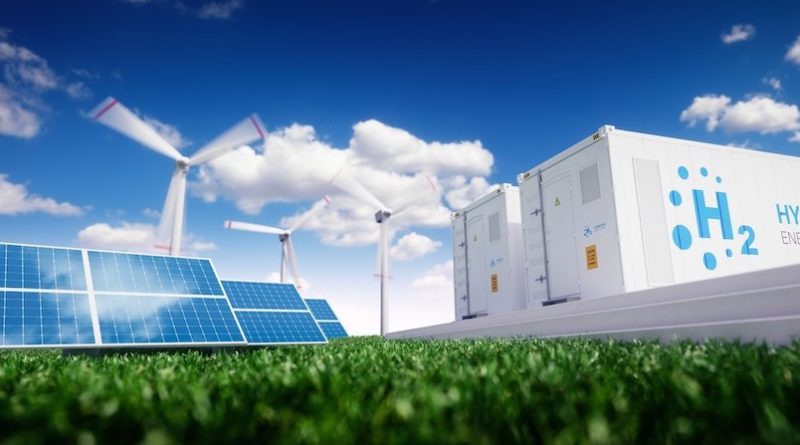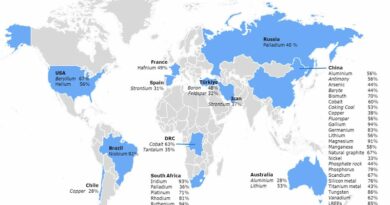
Integration of the energy and industrial sectors: Speeding up the transition towards a low-carbon economy
Climate change is an imminent threat to our society, economy and environment. It is our duty as politicians to lead the fight against this threat in order to save our planet and our society. As socialists and democrats, we therefore welcome the Paris Agreement, the European climate goals and especially the target to become the first climate-neutral continent until 2050. We also believe that it is our responsibility to leave no-one behind in this transition to carbon- neutrality. This claim has become even stronger during the COVID-19 crisis, as we will now need a fresh start for our society and economy. We should seize this opportunity to recover in a sustainable and future-proof way.
In order to achieve these goals, we need an energy transition moving away from the use of fossil fuels towards the use of renewable energies. We further need to decarbonise other important emitting sectors like the industry sector. The decarbonisation of the energy and industry sectors will not only contribute significantly to a reduction in greenhouse gas emissions, but it will also allow us to make these sustainable in terms of employment and competitiveness.
I am convinced that the energy and industry transitions are inextricably linked. We cannot look at these separately, but need to ensure that they are mutually reinforcing and beneficial.
Especially now, that COVID-19 has slowed down the transition in the energy and industry sectors and the European solar and wind market is expected to decrease by 20-33% this year, we need to find effective means to get back on track, and fast! This is where sector integration, i.e. the integration of the energy and industrial sectors, comes into play. The use of renewable energy through direct and indirect electrification in industrial processes through, for example, electric furnaces and the use of renewable energy carriers like hydrogen, can help industry to decarbonise. For this, industry needs significant amounts of renewable energy. Hence, the faster the energy transition goes forward, the faster industrial decarbonisation is possible. At the same time, I believe that industry can speed up the energy transition and decrease its cost by increasing demand and new markets for renewable energy. Through demand-response, it can also help to stabilise the electricity grid that has to deal with increasing intermittency. Industry can for example offer flexible consumption of energy through flexible production processes or feed electricity and waste heat back into the grid.
At the European level, the sector integration between energy and industry has only recently started to gain the attention it deserves. For too long the transitions of both sectors have been looked at separately. Now the time has come to break the silos and to address both transitions together.
In this respect, I welcome the planned Energy System Integration Strategy and the references to sector integration in the New Industrial Strategy for Europe. It is indeed true that industry needs sufficient, affordable and secure energy for its transition to make it a viable business case. We need to step up the deployment of and investments in renewable energies. We also need sufficient sources of green hydrogen in order to make the industrial decarbonisation possible and affordable. We should start to think about an import strategy for these renewable energy carriers, as industry will advance to the biggest energy consumer. It will increase its energy demand through direct and indirect electrification to an extent that will be impossible to satisfy solely through domestic production. Furthermore, we need to address missing energy infrastructure. Grids need to be better interconnected. We also need to find answers to the following questions: Which infrastructure do we need to make large amounts of hydrogen available to industry? To what extent can we use the existing gas infrastructure?
The announced offshore strategy, the review of the TEN-E Regulation to support renewable infrastructure, the Fuel Cells and Hydrogen Joint Undertaking and the European Hydrogen Alliance are important steps in the right direction. With the European recovery plan, the Commission has further announced an upgrade of the InvestEU pro- gramme and its additional enhancement through the Strategic Investment Facility to accelerate the deployment of renewables, energy storage, energy infrastructure, hydrogen and low-CO2 emission industries. Even though this is a promising proposal, the Commission could have seized the opportunity of the recovery plan to propose more concrete measures for a more sustainable and climate-neutral pathway because more remains to be done:
Taxes and levies on the industrial consumption of renewable energy should be minimised to incentivize the industrial transition to clean production processes. Subsidies for fossil fuels need to be abolished. An industrial electricity price should be considered.
We cannot expect the industry to make a transition as long as the use of fossil fuels instead of electricity from renewables is financially more attractive.
In order to make sector integration possible from the industry side, we need to step up investments, research and development in clean production technologies and demand- response mechanisms in order to make clean solutions available and affordable to industry. Affordability is crucial in order for industry to remain competitive and to maintain its current level of employment. Important Projects of Common European Interests (IPCEIs) can play a significant role. I am looking forward to the revision of the state- aid rules in 2021 and I hope that this revision will clarify the conditions for IPCEIs, including for industry and energy transition projects. Furthermore, the EU Strategy for Clean Steel and Chemicals announced by the Com- mission should address sector integration. In addition, flexible production processes and the feeding in of heat and electricity back into the grid for grid stabilisation purposes need to become financially attractive to industry. Even though waste heat is included in the review of the Renewable Energy Directive, a clear and strong regulation on the reuse of heat and sufficient demand for waste heat is necessary.
We can see that sector integration of the energy and industry sectors can speed up up our transition to carbon-neutrality and decrease its costs. Thus, the transitions of both sectors have to be aligned. With the Clean Energy Package and the European Green Deal and its therein-announced strategies, the European Union kick-started this process. Nonetheless, it is evident that we are only at the beginning of smart sector integration. I am looking forward to advancing it over the course of this legislature, as the time has come to think outside the box. Climate change is complex. Our answer to complexity should be smart creativity.




